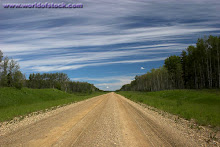 In North Sumatra, Indonesia, Lake Toba is 100 km long, 30 km wide and contains 240 cubic kilometers of water. It’s the residue of the biggest bang in the past 2 million years, the Mt Toba super volcano eruption of 73,000 years ago.
In North Sumatra, Indonesia, Lake Toba is 100 km long, 30 km wide and contains 240 cubic kilometers of water. It’s the residue of the biggest bang in the past 2 million years, the Mt Toba super volcano eruption of 73,000 years ago.That little bunger put 2800 cubic kilometres of rock, ash, and pumice into the air. That’s 112 times the 25 cubic kilometres produced by Mt Pinatubo in 1991 and Krakatoa in 1883.
An interesting question is, how much of the human race did Mt Toba wipe out?
Wikipedia says that “the Lake Toba eruption plunged the Earth into a volcanic winter, eradicating an estimated 60% of the human population (although humans managed to survive, even in the vicinity of the volcano.)”
Professor Martin Williams from Cambridge and now emeritus professor at the University of Adelaide on The Science Program last year seemed to be taking the view that the human race was all but wiped out apart from a population of a few thousand in Africa. I thought that seemed pretty straight forward until I started googling. One of the main pieces of evidence for a contrary view seems to be the discovery by Michael Petraglia, one of Williams’ colleagues Cambridge, of stone tools at a site called Jwalapuram, in Andhra Pradesh, southern India, above and below a thick layer of ash from the eruption of Toba.
The merits of this claim get a good workout at Anthropology.net.
As a bloke without any science qualifications who just wandered into this territory I’m probably not entitled to a view. Nevertheless it seems to me that Williams is probably right, though he doesn’t claim the case has been conclusively proven yet. The artifacts in India before and after the layer of ash need not have been left by the same people. In fact the earlier ones may not have been left by homo sapiens at all.
In any event it does seem clear that Toba caused a population bottleneck and that the human race is remarkably homogeneous genetically. Nevertheless populations of homo neanderthalensis survived, presumably in Europe. So too did homo floresiensis, presumably right there nearby.
There’s more on the subject at Wikipedia’s entry on the Toba catastrophe theory.
The Toba eruption lowered the world temperature by as much as 5C, a huge abrupt change when compared to the 0.5C or so by Mt Pinatubo. More particularly it caused a prolonged drought lasting about 1200 – 1500 years, I gather at least in the Bay of Bengal.
The question now is the likelihood of a repeat performance by Toba or another supervolcano. Williams in an extended version of the interview says that such an event could happen, but it seems we should be OK for some thousands of years. It’s a case of millennia rather than centuries, says Williams. Alert but not alarmed is the go.
Other cases of volcanic winters include the extreme weather events of 535-536 the cause of which is unknown and the eruption of Mount Tambora in 1815 (100 cubic kilometres) which caused the Year Without a Summer which destroyed crops in Northern Europe, the American Northeast and eastern Canada in 1816.
It’s interesting that Gwynne Dyer in his book Climate Wars can’t resist the temptation to include a supervolcano eruption, indeed of Toba, in one of the future scenarios he pens.
The time is 2039. The Philippines and Indonesia have become impatient with the attitude of other countries, especially Western governments, which rejected the notion of geoengineering, not because of fear of the environmental consequences, they feared a fresh outbreak of green terrorist bombings. Bankrolled by China, the Philippines and Indonesia began releasing high-altitude balloons to place one megatonne of sulphur into the stratosphere successfully dropping global temperature by 1C in 2040.
At that time Toba decided to clear its throat burping a mere 550 cubic kilometres into the atmosphere. It was enough to reduce the temperature another 3C or 2C lower than it was in 1990. Crops specially bred to cope with the heat failed everywhere. World grain production fell by 35%.
While no more than three or four hundred million people died directly from starvation, most were from the poorer countries in the tropics and subtropics. The political violence and social breakdown that ensued plunged a third of the world’s population into failed state status. While the temperature returned to ‘normal’ by the following year another 3-400 million died over the next five years from civil war, mass migration and genocide.
Dyer does not claim that his scenarios will be accurate, just that a lot of bad stuff is bound to happen.
Source: http://larvatusprodeo.net/2009/03/27/how-the-biggest-bang-in-2-million-years-nearly-did-us-in/




Tidak ada komentar:
Posting Komentar